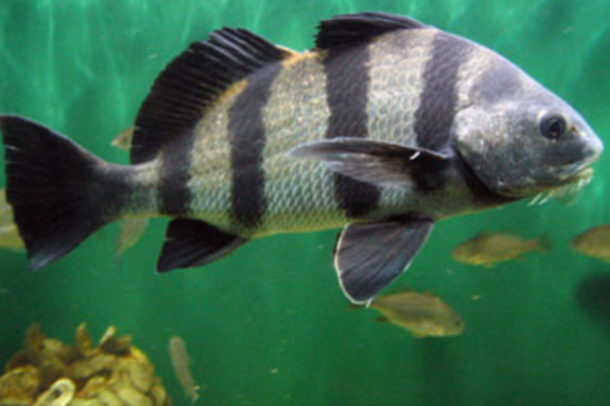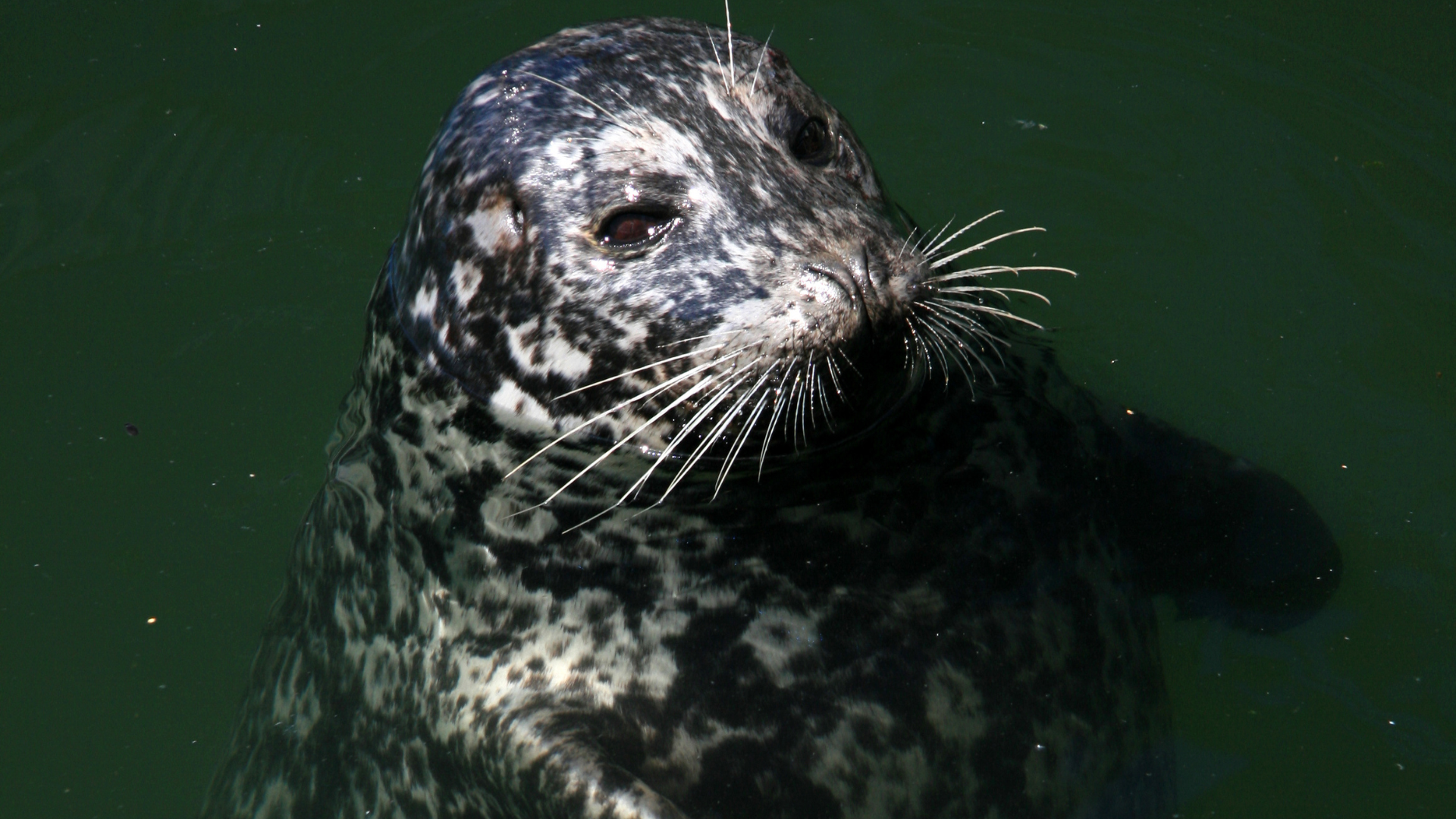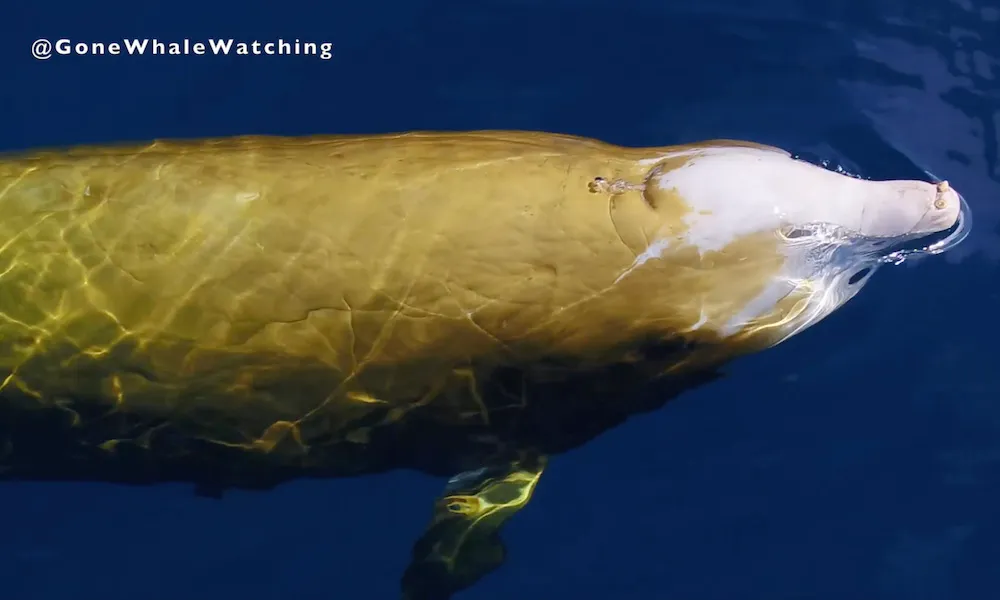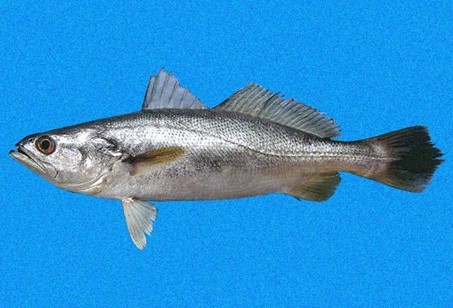Black Drum

Photo by Peter Wilson
LATIN NAME Pogonias cromis
AKA Texas Drum, Sea Drum, Saltwater Drum, Gray Drum, Drumfish, Striped Drum, Tambor – Juveniles under 1 lb called “Butterfly drum” Fish over 30lbs called “Bull Drum”
LENGTH 390cm (16”) at 3 years, up to 1m (40”)
WEIGHT Avg. 30-40 lbs, (13.5 – 18kg) Record weight 146 lbs. (66kg)
LIFETIME Up to 60 years
PHYSICAL TRAITS Coloration can vary based on location but the young have bars down their sides which disappear with age
BEHAVIOR Produces croaking or drumming sounds with the air bladder, they dig for food with their head down and their tail straight up creating small craters called “drum noodles”, mostly they stay local unless food is scarce, then they can migrate a long way (mostly within 10 miles but can be up to 245 miles within a year)
HABITAT Sand flats, flooding sloughs, shallow water to 100 ft deep, freshwater runoff to waters 2x salty as gulf, can survive extremes in temperature from hot shallow water in summer to freezing weather
LOCATIONS Gulf of Mexico
FOOD Eat worms, shrimp, fish, algae, crabs, and mollusks depending on their age
PREDATORS Juvenile black drum are preyed upon by a variety of larger fishes such as seatrout and jacks. Larger black drum are preyed upon by sharks and humans.
“Drum” is a broad colloquial name used in many English speaking areas to name various fish under the Sciaenidae family that make “drumming” sounds. The Black Drum makes these sounds by way of pharyngeal teeth.
These fish can get quite large – 100 kg (45 lbs) and their low frequency “drumming” can transmit a lot of energy over long distances. Southwest Florida residents living along canals frequently hear black drum calls in their homes during the spawning season. This is possible because the low frequencies of these calls are able to travel through the ground and into the walls and floors of their homes.
This became a significant problem in one housing development that featured protected waterfront access to every home. This channelized environment made prime habitat for drums (which are protected) and excluding habitat to their predators – mostly sharks. As a consequence members of the neighborhood association have become deeply intimate with the life cycles and natural history of the Pogonias cromis.
Audiographs
Black Drum
Source: James Locascio and David Mann, University of S. Florida College of Marine ScienceAudiograph: Black Drum,
Wikipedia
Discovery of Sound in the Sea
Macaulay Library
FishBase.org
Texas Parks and Wildlife
Fish, M.P. and Mowbray, H.M. 1970. Sounds of Western North Atlantic Fishes. Baltimore, MD: The Johns Hopkins Press. pg. 108-109.Hoese, H.D. and Moore, R.H. 1998. Fishes of the Gulf of Mexico: Texas, Louisiana, and Adjacent Waters. Texas A&M University Press, College Station, Texas 77843Mok, H.K. and Gilmore, R.G. 1983. Analysis of sound production in estuarine fish aggregations of Pogonias cromis, Bairdiella chrysoura, and Cynoscion nebulosus (Sciaenidae).Bulletin of the Zoological Institute of Academia Sinica 22: 157-186.







